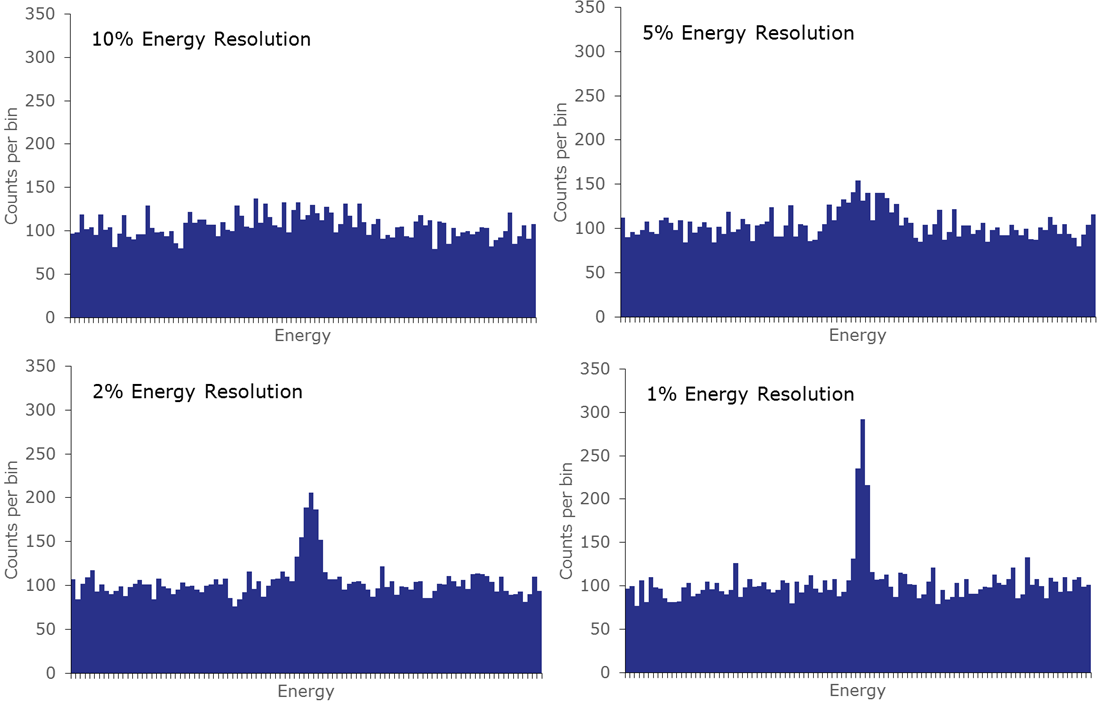Why Energy Resolution Matters - Part I
I'm always surprised by the amount of dirt I collect from my kitchen floor when I sweep it into one pile. I don't really notice it when it is spread all over the room, but when all the dirt is concentrated: wow.
It is the same thing with gamma-ray spectroscopy. If we want to detect an isotope - or understand how much we have - it is a lot easier when all the signal is concentrated in one place. The ability of a detector to concentrate the signal is its energy resolution.
Let's look at an example. Here are the exact same signals recorded on detectors of different energy resolution:

Where do you see the peak best? The best energy resolution (1%) makes it easiest to see the peak, know its location, and calculate its area - all of which help us understand the radiation environment better.
But, we are being a little simplistic here. In the real world, the signals won't be as clean as we just saw because of unavoidable noise from the radiation emission process itself. Instead, these signals would look more like:

Our signal has basically disappeared into the background with the 10% detector, and it's just barely visible on the 5% detector. It's not until we have a detector that can really concentrate the signal that this signal becomes obvious.
What does that mean in your nuclear application? Sharper peaks will help you:
This is why H3D's energy resolution makes its instruments so much more useful for so many applications ... and why, if you'll excuse me, I need to go sweep my kitchen floor.
Signup to receive future updates about H3D and our products here.